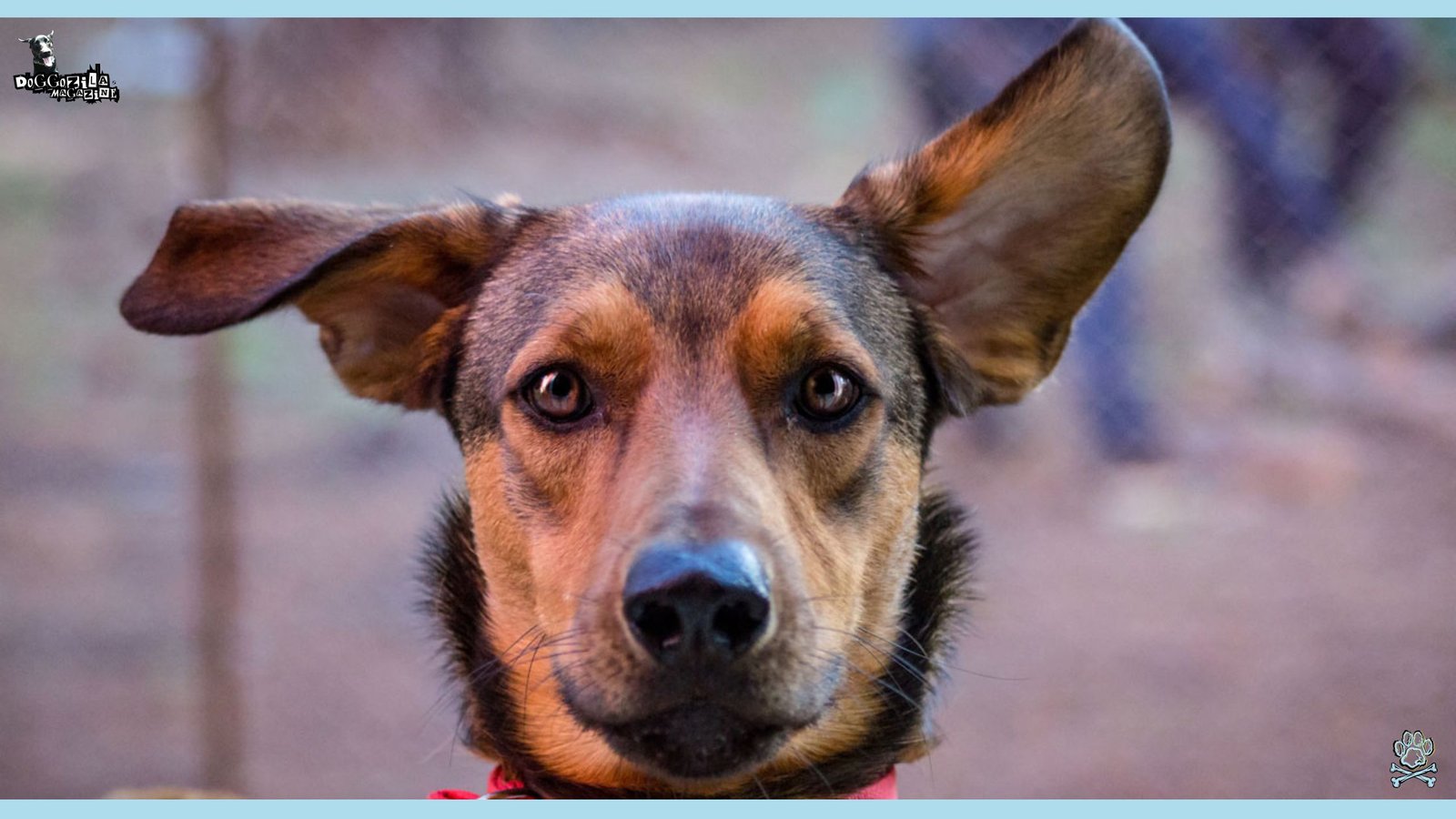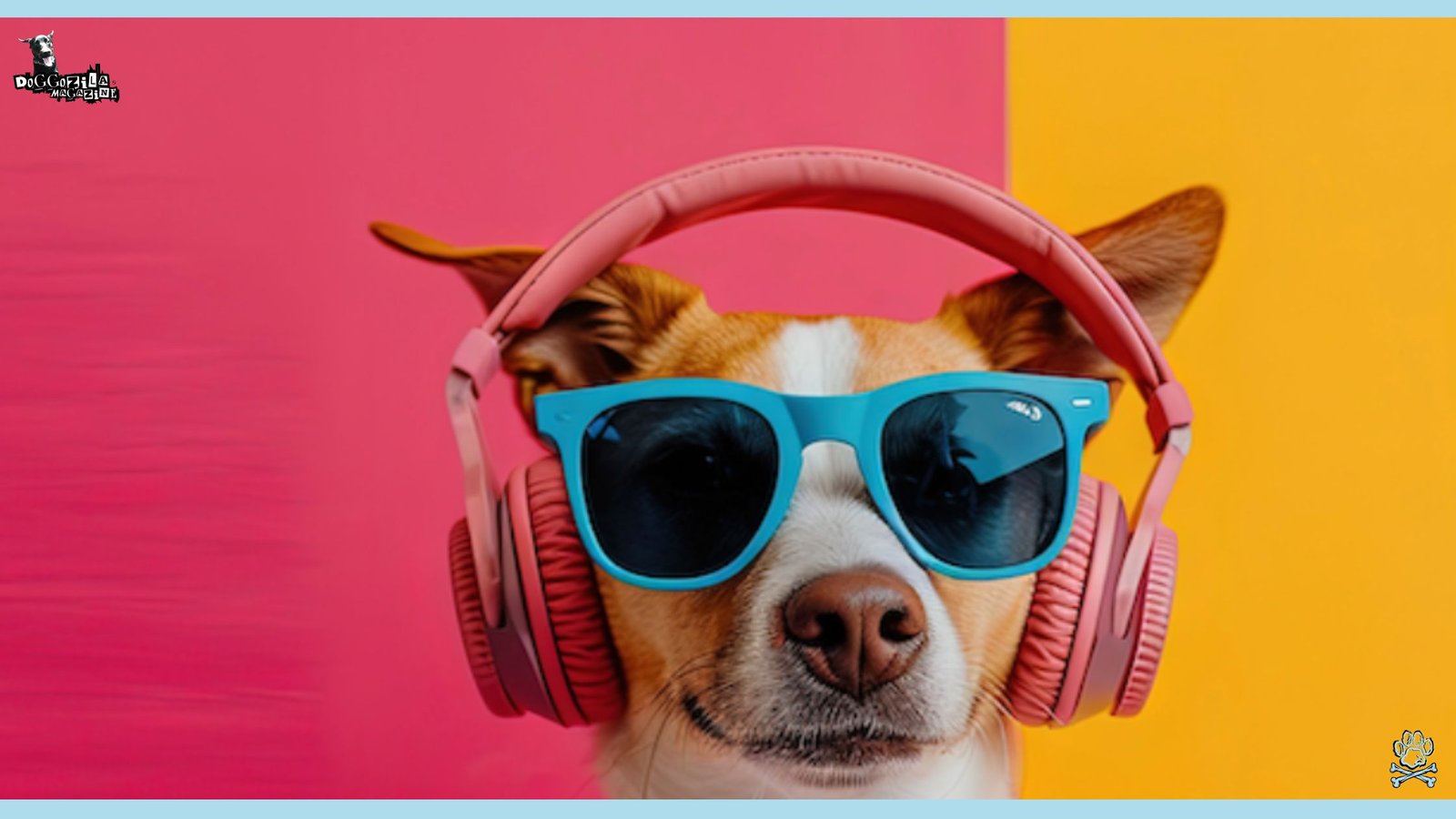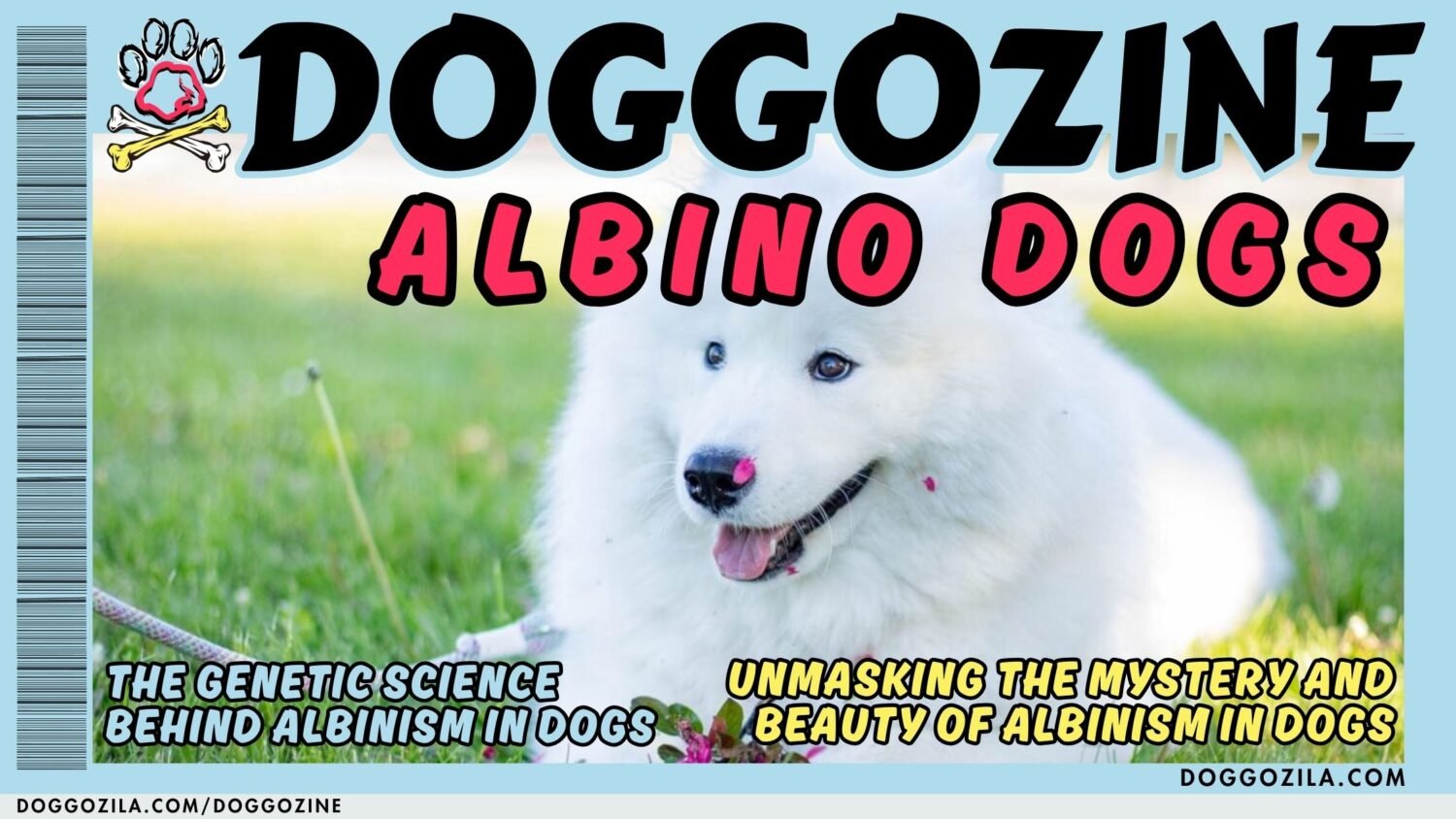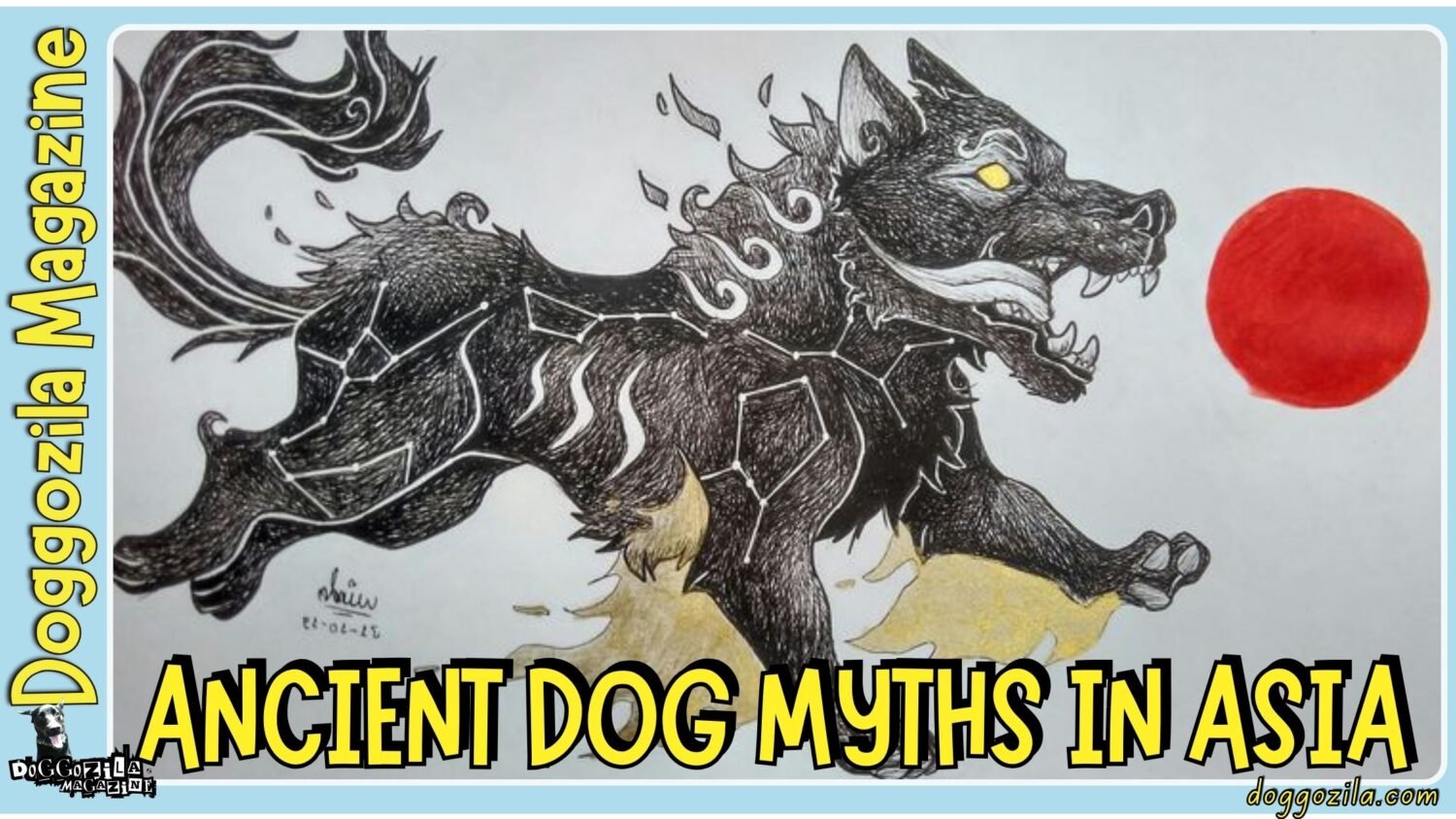Dog owners often wonder what their pets think. They notice dogs responding to untaught words. Dogs react to our emotions before we speak. These miracles reveal a profound truth. Your dog is constantly learning from you. They listen and understand more than you realize. Their minds actively decode our human world. Science is just beginning to understand this. How our own dog develops listening skills, often we do not notice.
This hidden learning happens during daily life. It occurs on walks and at the dog park. It even happens on quiet evenings at home. Your puppy has remarkable cognitive abilities. They can pick up information passively. They build a vast understanding of human behavior. Recent research reveals astonishing dog capabilities. It shows they process speech like humans do. Let’s explore the secret world of dog comprehension. It will change how you talk to your dog.
„You might think you’re just chatting to your dog, but new research reveals they are listening, learning, and understanding far more than you ever imagined.“

Quick Summary About THE DOG LISTENING SKILLS
Dogs possess an incredible, innate ability to understand human language and emotional cues, often learning through passive observation and daily routines rather than formal training. This article explores the science behind dog listening skills, the stages of their learning process, and practical ways to enhance communication and strengthen your bond with your furry friend.
THE SECRET WORLD OF DOG LISTENING SKILLS AND COMPREHENSION
Dogs have an innate ability to understand humans. We often miss this in daily life. They constantly process environmental information. They build knowledge without formal training. This natural learning happens during everyday interactions. It creates a deep foundation of understanding. Your dog listens even when not paying attention. That is the moment, when development of sophisticated dog listening skills happens. Science is just starting to appreciate this fully.
Groundbreaking study from the Universities of Lincoln and Sussex!
New research reveals astonishing dog mind capabilities. A 2025 study made a key discovery. Dogs can extract words from monotonous speech. They need no special tone or emphasis. This shows they understand content, not just tone. Our dogs listen to our conversations closely. They often pick out relevant information. This happens even when we are not talking to them.
How Your Dog Naturally Develops Listening Skills?
Dogs start learning from their environment early. Their brains are wired to decode human communication. They begin by recognizing speech patterns. Then they connect those patterns to outcomes. This process accelerates during puppy socialization. It continues throughout their entire lives. Every interaction provides new data for them. Their brain processes and files this away. They build a mental dictionary of associations.
What Are The Unexpected Moments When Dogs Learn Best?
Dogs learn most during informal daily routines. Structured training sessions are less important. Meal preparation is a prime learning opportunity. Walk anticipation teaches them patterns. Your arrival home creates strong connections. Dogs learn best when emotionally aroused. Play, excitement, or mild stress helps. These states enhance memory formation. Even television habits contribute to learning. Many dogs recognize commercial sounds. They learn to predict your behavior from them.
How to Recognize Your Dog’s Hidden Cognitive Abilities?
Spot your dog listening skills through subtle behaviors. Responding to a chip bag crinkle shows sound discrimination. Going to the door at “walk” is keyword extraction. Many dogs understand syntax variations too. They know “want to go outside?” is a question. They know “go outside now” is a command. This shows rare linguistic sophistication.
🔑 Key Points: Your dog constantly learns from casual conversations, not just direct commands.

THE SCIENCE BEHIND DOG HEARING AND LISTENING SKILLS
Dogs process speech in neurologically sophisticated ways. Their brain functions resemble our own. Brain scan studies reveal hemispheric specialization. They use the left hemisphere for meaningful words. The right hemisphere interprets emotional intonation. Your dog’s brain analyzes what you say. It also analyzes how you say it. It then integrates this information together. This enables nuanced comprehension beyond simple tone.
University of Sussex research demonstrated this. Dogs turn right for familiar words. This shows left-brain engagement. They turn left for emotional intonation. This shows right-brain activation. This organization allows efficient decoding. It represents a major domestication adaptation. Their brains evolved to understand us. This makes them uniquely tuned-in.
What Biological Factors Enhance Dog Listening Skills?
Dogs have physical hearing adaptations. Ear muscles rotate each ear independently. They detect frequencies up to 45,000 Hz. Humans only hear up to 20,000 Hz. This lets them notice pronunciation differences. It helps them understand word meaning changes. They can detect your car from blocks away. They prepare before you even park.
How Dogs Neurologically Process Human Speech?
Your dog’s brain uses multi-stage processing. First it breaks down sound streams. Then it compares them to stored vocabulary. They have neural circuitry for human voices. This shows specialized evolution for communication. They analyze words and intonation separately. Then they add body language clues. Finally they add environmental factors. This creates comprehensive understanding.
What is The Role Of Dog Domestication In Developing Listening Skills?
Thousands of years of coexistence changed dogs. Natural selection enhanced communication traits and dog listening skills evolved. Their brains now attend to human vocalizations. This happens more than in wolves. It begins in puppyhood. Genetic studies reveal changed brain genes. This shared history created a unique species. They are tuned to human vocal patterns. They notice body language and breathing changes. This makes them sensitive to our intentions.
🔑 Key Points: A dog’s brain processes word meaning and emotion separately, just like ours.

THE FOUR STAGES OF LEARNING IN DOG LISTENING SKILLS
Dogs progress through four distinct phases. This mirrors human complex subject learning. Acquisition is the initial introduction stage. Fluency makes responses quicker and reliable. Generalization applies learning across environments. Maintenance keeps skills sharp for life.
These stages explain context-dependent behavior. Your dog may sit in the kitchen but not the park. This is not disobedience. It is a generalization limitation. Each stage builds on the previous one. They create automatic response layers. Patience during each phase prevents owner frustration.
Stage 1: Acquisition – Building Initial Connections
Acquisition forms new neural pathways. It connects sounds with meanings or outcomes. This requires clear, consistent repetition. Positive reinforcement is crucial here. It releases dopamine for stronger connections. Keep sessions short and successful. This builds confidence and eagerness.
Stage 2: Fluency – Developing Reliable Responses
Fluency focuses on speed and reliability. Varied practice solidifies initial learning. Your dog begins responding automatically. Practice in slightly different contexts helps. Do this within the same environment first. This phase often reveals understanding gaps. It allows gentle correction of misunderstandings.
Stage 3: Generalization – Applying Knowledge Everywhere
Generalization is challenging but crucial. Dogs learn to apply understanding everywhere. This requires intentional practice in new settings. Start with quiet outdoor spaces first. Progress to busier locations later. Be patient during this phase. It seems like they forgot everything. They are actually learning universal application.
Stage 4: Maintenance – Keeping Skills Sharp For Life
Maintenance keeps the dog listening skills sharp forever. It uses occasional refreshers and real-world practice. Without reinforcement, comprehension can deteriorate. Incorporate known commands into daily routines. Use low-stakes situations for practice. Provide occasional rewards to maintain associations. This prevents skill rust over time. It ensures compliance in emergencies.
🔑 Key Points: Dogs need to learn a skill in multiple environments for true reliability.

DEVELOPMENTAL WINDOWS IN DOG LISTENING SKILLS
Puppies progress through critical developmental periods. These permanently shape future understanding abilities. The socialization window is most important. It occurs between 3-12 weeks of age. Puppies are maximally receptive to new experiences. They form lasting impressions about safety. What they learn now shapes future capacity. Missing these windows creates permanent challenges in developing dog listening skills.
Dog fear periods follow socialization. Puppies become sensitive to negative experiences. The first occurs around 8-10 weeks. Another appears between 6-14 months. Single frightening experiences create lasting associations. Understanding these stages provides appropriate support. It maximizes innate communication potential.
Critical Socialization Periods For Puppy Listening
Prime socialization happens at 3-12 weeks. Puppies are most receptive to human language. Their brains are exceptionally plastic now. They easily absorb sounds and patterns. This forms their lifelong communication foundation. Exposure to diversity now creates adaptability. Deprived puppies often struggle forever.
How Adolescence Affects Dog Listening Skills?
Adolescence brings hormonal and neurological changes. It occurs between 6-18 months. This can disrupt reliable dog listening skills. Teenage dogs test boundaries and exhibit selective hearing. They seem to forget mastered commands. This is normal developmental testing. It is not permanent regression. Patient consistency leads to stronger adult skills.
How to Recognize and Navigate The Dog’s Fear Periods?
Dog fear periods create sensitivity to negative experiences. They last roughly 2-3 weeks each. They typically occur at multiple ages. Your puppy may fear familiar objects suddenly. This affects their response to verbal cues. Patient support without confrontation helps. It maintains their communication skills.
🔑 Key Points: The key socialization period for puppy listening skills is between 3-12 weeks.

ADVANCED DOG LISTENING SKILLS: BEYOND BASIC COMMANDS
Dogs continuously expand their understanding throughout life. They often develop surprising comprehension. Many build extensive vocabularies. This includes objects, actions, and abstract concepts. The listening skills of your dog exceed simple command response. They learn through pattern recognition and deduction. They constantly update their mental sound database. This requires no formal training.
A 2015 dog study revealed sophisticated processing. Dogs understand both word meaning and emotion. They experience cognitive dissonance with mismatched messages. This explains confusion with mixed signals. Their brains detect our communication inconsistencies.
How Dogs Recognize Their Own Names?
Name recognition is fundamental yet advanced. Dogs understand names as referential markers. They distinguish them from similar sounds. They learn it means “pay attention now.” This understanding remains robust in noise. It demonstrates sophisticated auditory filtering. The listening skills of your dog develop early in their life.
Understanding Human Emotional States Through Voice
Dogs excel at reading human emotions vocally. They respond differently to various tones. They detect subtle vocal changes humans miss. This includes stress tremors and pitch variations. This ability evolved through domestication. Service dogs leverage this skill daily. They often respond before owners recognize their own changes.
The Phenomenon Of Incidental Learning In Dogs
Incidental learning picks up meanings without teaching. It happens through repeated daily exposure. Your dog learns sound-outcome predictions. Car keys mean potential travel. The refrigerator might mean food. This learning happens automatically. It explains untaught knowledge.
🔑 Key Points: Dogs can experience confusion when your tone and words don’t match.

PRACTICAL APPLICATIONS FOR ENHANCING DOG LISTENING SKILLS
You can dramatically enhance innate listening abilities. Use techniques matching natural learning processes. Dogs learn best through positive association. Consistency and gradual challenges build confidence. Implement strategic practices for improvement. Transform interactions into learning opportunities. This strengthens your bond simultaneously.
Many owners face “show me the money” syndrome. Dogs respond only to visible treats. This creates conditional responsiveness. The solution uses unexpected reward locations. It builds motivation without visible treats. This develops dog listening skills based on trust.
Creating Listening Opportunities In Daily Routines
Incorporating listening practice into existing dog routines will enhance their skills. Use mealtimes, walks, and play sessions. Ask for a sit before opening doors. Practice down-stay during food preparation. Call back unexpectedly during walks. These integrations teach regular check-ins. They prove attention brings good things unexpectedly. This mirrors natural learning through experience.
Dog Training Techniques That Build Better Listening
Use the “three D’s” framework for improvement. These are Duration, Distance, and Distraction.
Start short, close, and distraction-free. Gradually increase one variable at a time. For example, practice sits with slightly longer holds, then sits when you’re one step away, then sits with mild distractions like a toy on the floor. This builds reliability through success. It prevents overwhelming your dog.
Managing Environments For Optimal Listening Success
Set your dog up for listening success. Control their environment during early learning. Reduce distractions for new concepts. Gradually reintroduce real-world complexity later. Use physical barriers to prevent bad habits. Environmental management prevents failed repetitions. It builds neural pathways for reliability.
🔑 Key Points: Weave listening practice into daily routines like mealtimes and walks.

PROBLEM-SOLVING: WHEN DOG LISTENING SKILLS FALTER
Even excellent listeners experience setbacks. Understanding these helps effective response. Common issues include selective hearing. Distraction reduces responsiveness in stimulating places. Inconsistent cues create confusion. View challenges as communication opportunities. They strengthen your foundation. Build reliable dog listening skills through targeted approaches.
Many breakdowns occur from context-dependence. Kitchen understanding may not transfer to parks. This is a learning limitation, not stubbornness. Other issues include treat-dependent responses. Identify root causes for proper solutions.
Addressing Selective Hearing In Dogs
Selective hearing has common causes. Other things seem more interesting. Learning may not be generalized. Improve this with higher-value rewards. Practice in gradually distracting settings. Examine your own command habits. Avoid repeating without follow-through. Say a command once only. Then help compliance if needed.
Building Engagement When Distracted
Build attention ability progressively. Start below their tuning-out threshold. At parks, start at greater distances. Decrease distance over multiple sessions. Use extra-high-value rewards for challenges. This builds their “attention muscle” gradually. It teaches that check-ins bring rewards anywhere.
Troubleshooting Common Listening Breakdowns
Many issues stem from unclear communication. Insufficient reward history causes problems. Environmental factors overwhelm processing capacity. Address these systematically. Ensure reliability in low-distraction first. Increase difficulty while maintaining reinforcement. Return to basics with struggling commands. Consider physical factors like hearing loss in dogs. Pain or stress requires veterinary attention.
🔑 Key Points: “Selective hearing” often means the environment is more interesting than your reward.

DEEPENING YOUR BOND THROUGH DOG LISTENING SKILLS
Work with natural abilities, not against them. Transform your relationship from transactional to connected. Superior dog listening skills create a communication feedback loop. Understanding and bonding strengthen together. This connection transcends simple command compliance. It becomes true partnership and mutual understanding.
This connection shows in emergency situations. Off-leash dog reliability becomes crucial here. Dogs detect health changes before we do. Service dogs use this deep attunement. Family pets develop this ability too. They know we’re upset before humans notice.
Reading Your Dog’s Communication Signals
Become a better listener yourself. Learn your dog’s subtle communication signals. Create true dialogue, not one-way communication. Notice ear position and tail carriage. Watch eye shape and body tension. These indicate emotional state and comprehension. A turned head might mean feeling pressured. Lip licking may signal confusion. Respect these signals to build trust.
Building Trust Through Mutual Understanding
Trust grows with mutual understanding attempts. Respond appropriately to their needs and concerns. This creates security and enhances listening. They become less anxious about future events. Trusting dogs show better problem-solving abilities. They have greater confidence in new situations. They check in with owners when uncertain. This is the pinnacle of canine-human communication.
Adapting Your Communication To Your Dog’s Perspective
Communicate from your dog’s perspective. Use consistent signals and clear consequences. Understand their natural learning processes. Match body language to verbal messages. Dogs find visual cues more intuitive. Keep commands consistent across all people. Recognize they are a different species. They have unique communication priorities. Embrace this difference for better connection.
🔑 Key Points: The deepest communication happens when you learn to read your dog’s signals, too.










